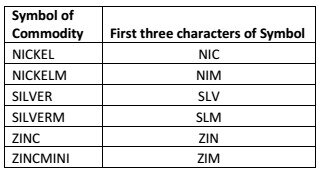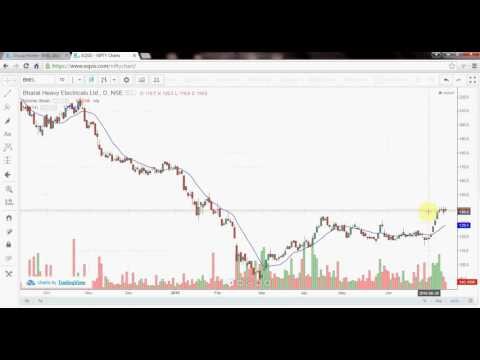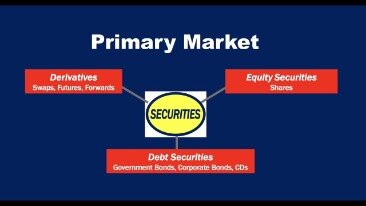Contents:

Refers to a “secondary offering” of stock, in which a firm increases its number of shares outstandin. A rate adjustment used for economic or business data, such as sales numbers or employment figures, that attempts to remove seasonal variations in the data. Measures the performance of actively managed funds against their relevant S&P index benchmarks. A group of indexes that tracks changes in home prices throughout the United States. The indexes are based on a constant level of data on properties that have undergone at least two arm’s length transactions.
Any bank, stockyard, mill, storehouse, plant, elevator, or other depository that is authorized by an exchange for the delivery of commodities tendered on futures contracts. Should you have your long-term money sitting in stocks, which tend to outperform other assets over time, or should you keep cash on hand so that you can take advantage of any opportunities that arise? There will be investors that have made buckets of money with both strategies. There are also preferred shares of stock, which are not readily available to retail investors.

Weighting constituents according to the proportion of cash dividends that they generate compared to the sum total of cash dividends for all constituents within the index. A technical analysis indicator which relates the number of stocks that closed higher to the number of stocks that closed lower, compared to the previous day’s closing prices. We’re watching inflation on both sides of the Atlantic – including the Fed’s preferred PCE inflation gauge and flash inflation in the euro area. We expect services inflation to keep core inflation elevated.
Return on Equity (ROE)
The index is designed to provide a broad representation of the U.S. dollar-denominated high yield liquid corporate bond market. Average of the 1-year forward performance, taken for each individual 1-year period, following year-end trailing 12-month dividend yields above the median value for all 24 values for the MSCI Emerging Markets Index. Has been proposed as an alternative to Quantitative Easing when interest rates are close to zero and the economy remains weak or enters recession. Economists have used the term ‘helicopter money’ to refer to two very different policies. The first set of policies emphasizes the ‘permanent’ monetization of budget deficits. The second set of policies involves the central bank making direct transfers to the private sector financed with base money, without the direct involvement of fiscal authorities.
A market capitalization-weighted index designed to measure the performance of the Indian equity market. A market capitalization-weighted index designed to measure the performance of the Hong Kong equity market. A market capitalization-weighted index designed to measure the performance of the French equity market. A free float-adjusted, market capitalization-weighted equity index designed to measure the performance of a specific countries market. A free float-adjusted, market capitalization-weighted equity index designed to measure the performance of the Chinese equity market. The JP Morgan GBI EM Global Diversified tracks the performance of local currency debt issued by emerging market governments, whose debt is accessible by most of the international investor base.
JPM EMBI Global Diversified Index
You can alsosell at limit, guaranteeing that your broker will only sell your stock at a specified price or higher. Your stock investment strategy will differ depending on your investment goals and the overall size of your portfolio. Most financial advisors recommend maintaining a good diversification (i.e. variety) of stocks to reduce risk.
A sustained downturn in https://trading-market.org/ prices, increasing the chances of negative portfolio returns. Agreements to either buy or sell rupees in exchange for U.S. dollars at a specified exchange rate one month into the future. Treasury yield slid further as the market priced in a series of Fed rate cuts. Central banks confront the growth-inflation trade-off, with the Federal Reserve seeing recession but no rate cuts.
Volume-Weighted Average Price (VWAP)
The weighted average of a country’s currency relative to an index or basket of other major currencies, adjusted for the effects of inflation. A bond portfolio that has offsetting positions in Treasury securities to reduce interest rate risk. Compilation of analyst estimates for earnings per share over the coming 12-month period.

A stock market index of US stocks made by Standard & Poor's which includes all stocks in the S&P 500, S&P 400, and S&P 600. A measure of the large-cap growth segment of the U.S. equity universe, selecting from the Russell 1000 Index. The yield that an investor in futures receives as the long position converges to spot.
How to Value Company Stocks: P/E, PEG, and P/B Ratios
The United States dollar, or U.S. dollar, is made up of 100 cents. It is represented by the symbol $ or US$ to differentiate it from other dollar-based currencies. A debt obligation issued by the United States government that matures in 5 years. A debt obligation issued by the United States government that matures in 30 years. A debt obligation issued by the United States government that matures in 10 years. A total expenditure incurred by a company to produce, store, and sell one unit of a particular product or service.
Market capitalization weighted measure of the performance of companies within the S&P 500 Index that are in the Utilities sector. Market capitalization weighted measure of the performance of companies within the S&P 500 Index that are in the health care sector. Market capitalization weighted measure of the performance of companies within the S&P 500 Index that are in the consumer staples sector. Market capitalization weighted measure of the performance of companies within the S&P 500 Index that are in the consumer discretionary sector. Equity investments are not risk free, but it is thought that investors buy stocks because the returns they expect are high enough to allow them to take the risk.
Higher values imply a higher standard of living for that country’s citizens. Paul Volcker was an American economist who served as the 12th chairman of the 40 stock market terms from 1979 to 1987. During his tenure as chairman, Volcker was widely credited with having ended the high levels of inflation seen in the United States throughout the 1970s and early 1980s. Indexes that take a rules-based approach with regular rebalancing schedules that are not changed due to market conditions. Euro at parity means the euro would be trading at rate of $1 equals €1. A form of investment outsourcing where investment decisions are made for an investor by a third-party professional.
The rate of return an investor receives if a fixed income security is held to maturity. The number of contracts traded during a specified period of time. It is most commonly quoted as the number of contracts traded, but for some physical commodities may be quoted or as the total of physical units, such as bales, or bushels, pounds or dozens or barrels.
However, “the next year has the mix of various ingredients that make me believe this is going to be better for equities and also certain parts of the bond market—especially the front end” of the bond market. What many investors don’t realize—or had forgotten—is that correlations aren’t written in stone. When measuring correlation, a reading of 0 indicates stocks are moving with no relationship, while 1 means gains or losses in perfect unison. Almost two billion people worldwide partake in the culinary delight of bugs. In Thailand, fried caterpillars are common treats at street markets.
- A transaction in which a company sells its own shares to the marketplace.
- A market capitalization weighted index tracking the top 50 Chinese companies.
- A provision in an option contract specifying that it will be exercised automatically on the expiration date if it is in-the-money by a specified amount, absent instructions to the contrary.
- Tracks the performance of a selected basket of liquid emerging markets U.S. dollar-denominated government bonds.
The strategy is to buy low and sell high as stock prices go up and down. Volume is a measure of how much a certain stock or other investment has been traded over a certain period of time. Volume is a critical component of strategically analyzing stock market trends, and is often used to determine market strength. A moving average is the average price of stocks or other assets over a specific period of time. Generally used in technical analysis charts, it’s calculated by averaging data from the previous time periods to help investors identify the current direction of price trends. A market index tracks the performance of a certain collection of stocks, often grouped to represent a certain industry.
As defined by Morningstar, short-government portfolios have at least 90% of their bond holdings in bonds backed by the U.S. government or by government-linked agencies. This backing minimizes the credit risk of these portfolios, as the U.S. government is unlikely to default on its debt. These portfolios have durations typically between 1.0 and 3.5 years, so they have relatively less sensitivity to interest rates and, thus, low risk potential.
Dow closes 570 points lower, turns negative for 2023 as Powell ignites higher rate fears: Live updates - CNBC
Dow closes 570 points lower, turns negative for 2023 as Powell ignites higher rate fears: Live updates.
Posted: Tue, 07 Mar 2023 08:00:00 GMT [source]
Refers to market gains that may take place in during the month of January, as investors establish new positions for the year after selling losing positions in December to engage in tax-loss harvesting. An investment grade is a rating that signifies a municipal or corporate bond presents a relatively low risk of default. IBD is an acronym for the Investment Banking Division within the overall investment bank. IBD has responsibility for working with corporations, institutions, and governments to carry out capital raising as well as for executing mergers and acquisitions and various types of advisory mandates. An interest rate environment in which long-term debt instruments have a lower yield than short-term debt instruments of the same credit quality. A share of a company incorporated in the Chinese mainland that is listed on the Hong Kong Stock Exchange or other foreign exchange.

Investment that represents a pooling or grouping together of many people’s loans utilized to make large purchases, such as houses or cars. As they people pay their debts, the security generates cash flows. Market capitalization-weighted measure of the performance of small cap equities within the United States, with constituents required to demonstrate profitability prior to gaining initial inclusion.
We don’t think so – and that’s very different from any other financial stress episode in the past 40 years. Dispersion is the difference between winners and losers in the market. High dispersion implies a wide difference between winners and losers, while low dispersion implies a narrow difference between winners and losers. Long/short strategies can thrive in high dispersion environments because they can go long companies who may become outsized winners and go short companies that may become relative losers. In a scenario where I take a short position on a nifty put option at a strike price of 8400, which expires on 24th Dec 2014. Is it possible to short a stock in the cash segment for holding overnight or for long term?
The Securities Exchange Commission and the government have strict rules for companies issuing an IPO. The amount of money a buyer is willing to pay per share for a stock. It’s balanced against the ask, which is what a seller wants per share of that same stock.

